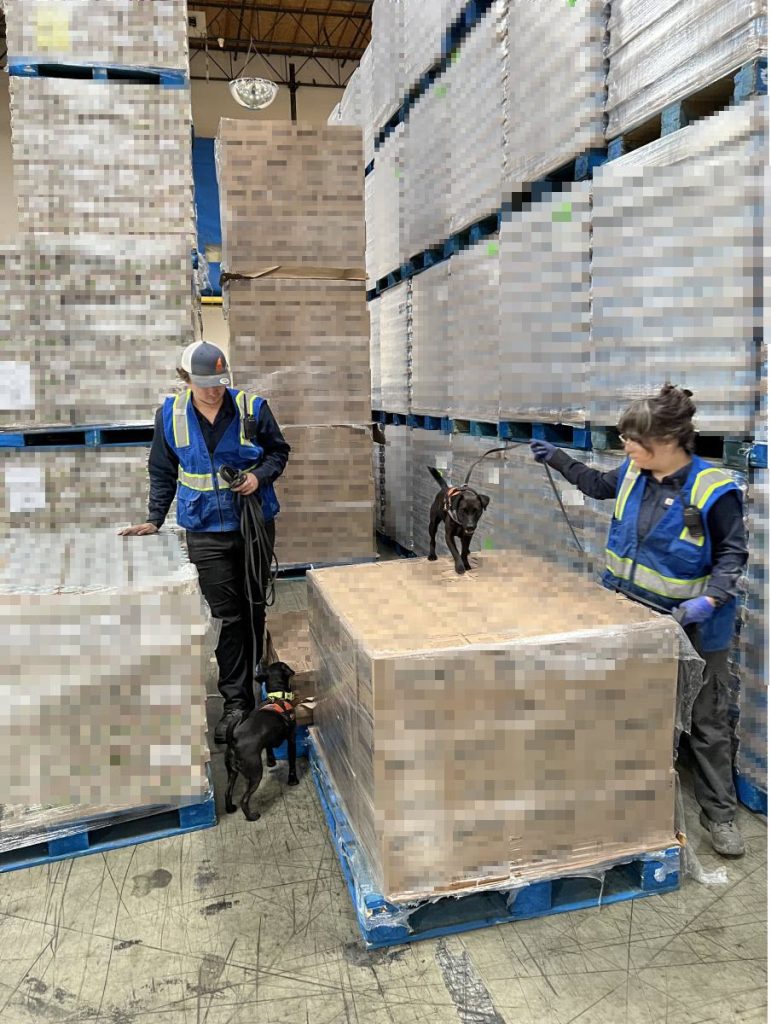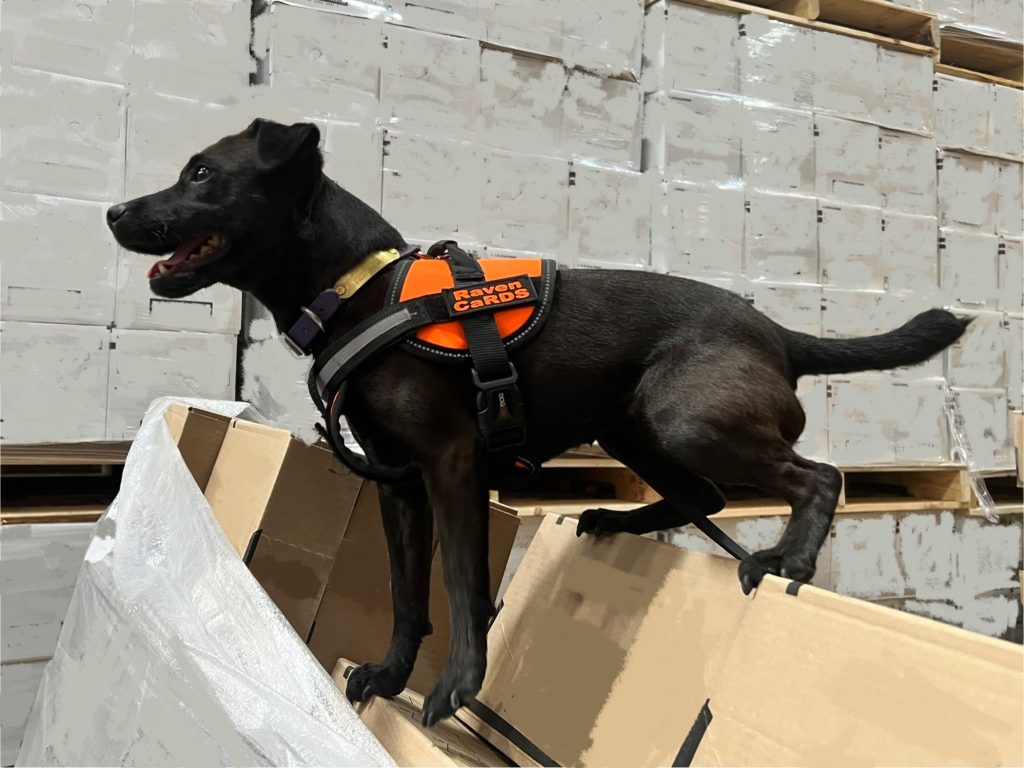 CaRDS teams are deployed to client facilities by pre-arrangement. Some of our work is under annual contract while other clients request monthly, bi-monthly or quarterly visits. Where there is an uptick in rodent activity, more frequent visits may be required. The client determines the day, date and actual work times based on their operating schedule. While some of our clients prefer to run the dogs while the facility is closed, others simply block off aisles on a rolling basis. The dogs are trained to work in close proximity to forklifts and other machinery and, more recently, even robots. There is no need to shut down the operation, although finding a less active time results in less interference.
CaRDS teams are deployed to client facilities by pre-arrangement. Some of our work is under annual contract while other clients request monthly, bi-monthly or quarterly visits. Where there is an uptick in rodent activity, more frequent visits may be required. The client determines the day, date and actual work times based on their operating schedule. While some of our clients prefer to run the dogs while the facility is closed, others simply block off aisles on a rolling basis. The dogs are trained to work in close proximity to forklifts and other machinery and, more recently, even robots. There is no need to shut down the operation, although finding a less active time results in less interference.
The client supplies supervisory personnel and one or more dedicated forklift operators. The supervisor designates the areas to be searched and may or may not accompany the team. The fork lift operator(s) are ready to remove infested pallets at the instruction of the supervisor.
We ask that a pallet of junk product be located near the location where the dogs will enter the building. Before beginning the search we test each dog on a container of well protected mice hidden from sight within this pallet. This ensures that each dog is ready for the day’s work.
Following the supervisor’s direction, the dogs and their handlers are deployed to search designated aisles. Each dog is on a 33 foot lead that enables it to thoroughly and systematically search each aisle. No dog ever runs free in the facility. Nearly all rodents, particularly mice are found on the bottom level of pallets making this search pattern highly effective.
The number of teams required to search a given facility depends on the size of the facility and the amount of known rodent activity. We use between two and four teams. Four teams can adequately search a 1.5 million square foot warehouse in between 4-5 hours.
 Handlers are skilled at “reading” their dog’s signals. Sometimes, even the dog isn’t sure and may request a second opinion from another team. We don’t want to move pallets unnecessarily.
Handlers are skilled at “reading” their dog’s signals. Sometimes, even the dog isn’t sure and may request a second opinion from another team. We don’t want to move pallets unnecessarily.
When a “hit” is confirmed, either by dog, ultra-violet or thermal imaging, the affected pallet(s) is removed from the warehouse floor via forklift to a designated corral off premises trailer. In some cases, the dog and handler may accompany the pallet in transit to prevent any escapes in route.